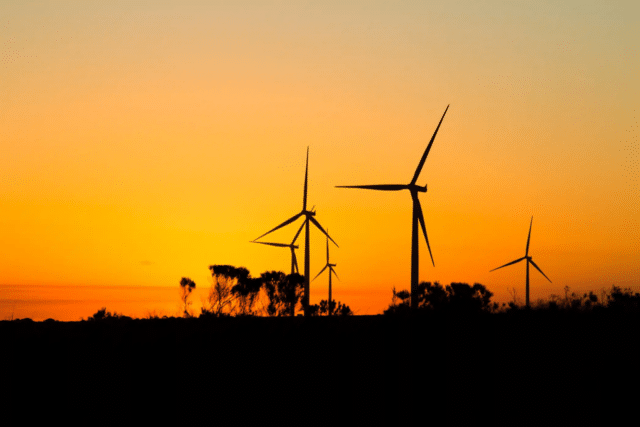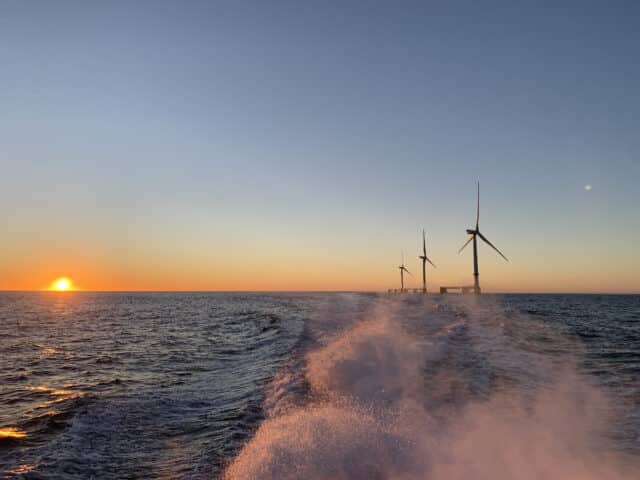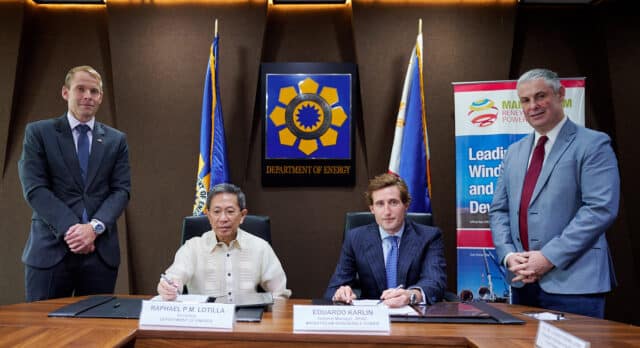Quaney: Chilean projects a cornerstone of Mainstream’s growth ambition
Category
News
Date
10 December 2021
Location
Chile
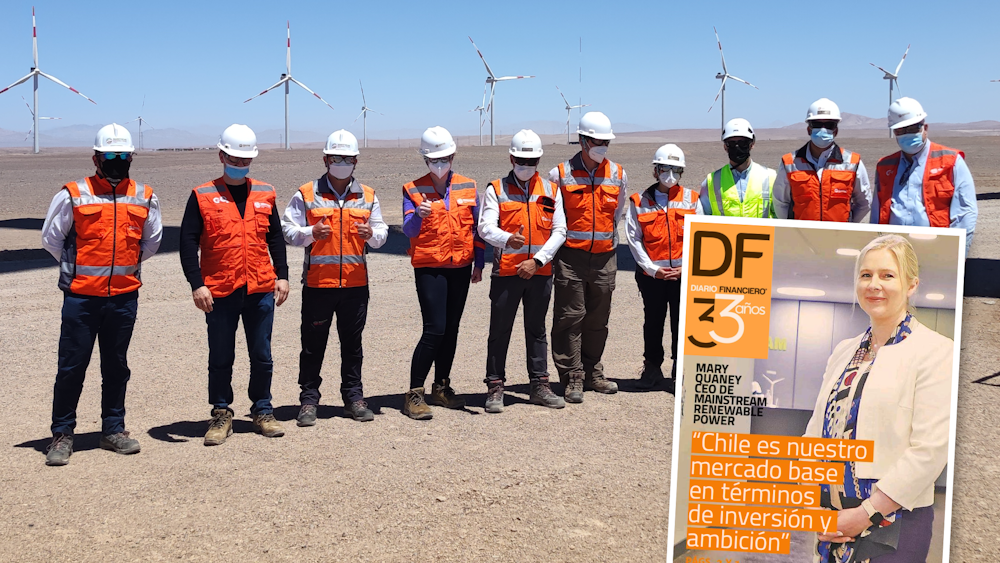
Mainstream CEO Mary Quaney, third from left, toured Andes Renovables projects in the northern Antofagasta region and was interviewed by Diario Financiero during last month's visit to Chile
Mainstream’s Chief Executive Officer, Mary Quaney, visited Chile last month to inspect construction progress on the company’s 1.37 GW wind and solar platform, Andes Renovables.
And as well as getting hands-on with the build-out – installing the final PV panel at the Pampa Tigre Solar Farm in Antofagasta, one of ten projects in the platform – she made time to speak to Diario Financiero, the country’s respected business and finance newspaper.
The interview, which also featured our Latam General Manager Manuel Tagle, provided an insight into Mainstream’s long-term strategy for both Chile and the region as a whole, including its new 1GW hybrid platform, Nazca.
Read it in full below, reprinted in English with kind permission of the DF publishers.
MAINSTREAM WILL LOOK TO EXPAND INTO THE REST OF THE REGION, TAKING CHILE AS A STARTING POINT
- “Chile is our base market in terms of investment and ambition,” said Mary Quaney, CEO of the Irish firm.
Mainstream Renewable Power landed in Chile in 2008, almost at the same time as the global development of renewable energy began. Then, there was little or no industry in the country, an opportunity that the company saw to start developing wind and solar projects in the territory.
Today, it is considered the largest developer of renewable energy projects, with more than 6,500 MW under development, 549 MW under construction and 804 MW in operation on four continents. Of these projects, 10 are under construction in Chile, which is practically the only base in the region.
However, the firm has already opened a small branch in Bogotá, Colombia, and plans to reach at least one more territory by 2022.
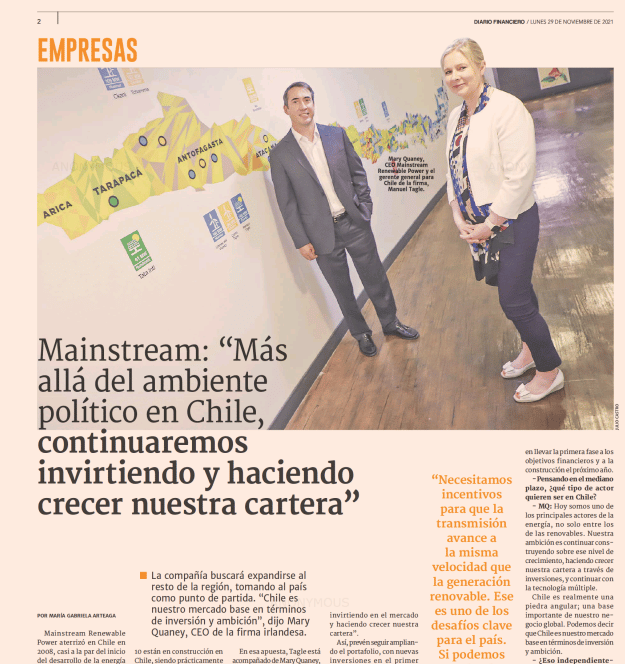
READ AND DOWNLOAD THE ORIGINAL ARTICLE
“Part of our strategy for the coming year is regional growth, as well as continuing to consolidate our position in Chile with the delivery of our projects,” says Manuel Tagle, the firm’s General Manager for the country.
In this bid, Tagle is accompanied by Mary Quaney, CEO of the Irish company, who arrived last week in Santiago to learn about the plans, the team and visit the projects on the ground.
In his view, Chile is “our key market in terms of investment and ambition. It is a cornerstone” of the agenda they are developing.
As a result, he says that regardless of the political environment, they have “a fairly long-term view, so we continue to invest in the market and grow our portfolio”.
Thus, they plan to continue expanding the portfolio, with new investments in the first quarter of 2022.
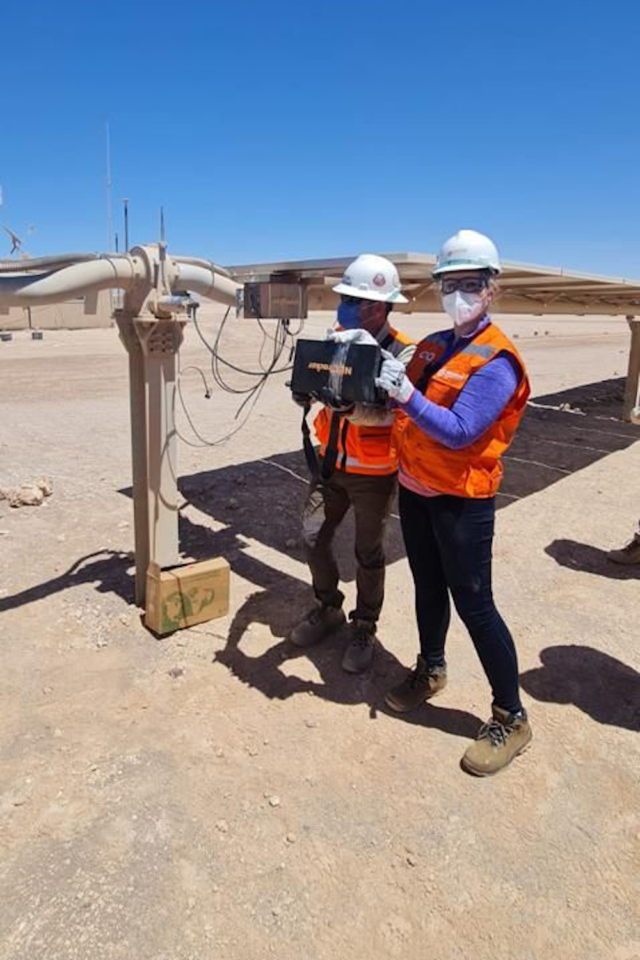
Quaney tests the solar tracking system at Pampa Tigre after helping to install the final PV panel at the 100 MW project site
Diario Financiero: What is Mainstream Power Chile up to now?
Mary Quaney: The Andes Renovables platform is the cornerstone of our global portfolio, and its completion is progressing well. We are now very focused on our next platform, Nazca Renovables, which has 1 GW of multi-technology: wind, solar and incorporating battery storage. We are on track to bring the first phase to financial close and construction next year.
DF: Thinking in the medium term, what kind of player do you want to be in Chile?
MQ: Today we are not only one of the leading renewable energy players, we are one of the leading energy players. Our ambition is to continue building on that level of growth, growing our portfolio through investments, and continuing with multiple technologies.
Chile is really a cornerstone, an important base of our global business. We can say that Chile is our base market in terms of investment and ambition.
DF: Regardless of the political, economic and social environment in the country?
MQ: The short answer is yes, very firmly. When entering a market, we look at the general fundamentals of the market. The role that renewable energy plays in the energy system, and its capacity for growth. The experience in Chile since 2008 has confirmed this. We see a significant level of growth in Chile.
We are not a new player; we have already gone through changes of government in other markets, and we know that there are political cycles. We have a long-term view, so we continue to invest, growing our portfolio because, ultimately, the fundamentals of our position, growth and ambitions will remain.
Manuel Tagle: The Andes Renovables investment is US$1.8 billion. There are 10 projects divided into platforms and all were financed after the crisis in October 2019. In addition, we are planning new financings for early 2022. We remain very optimistic about Chile and, despite the change of government, we see a common agenda in support of renewables’ penetration. Of course, there is still a lot to discuss regarding methodology, incentives, transmission, but in the end they are giving a very strong signal to companies like Mainstream and to the financial market.
DF: Has the climate situation affected your plans for the project portfolio?
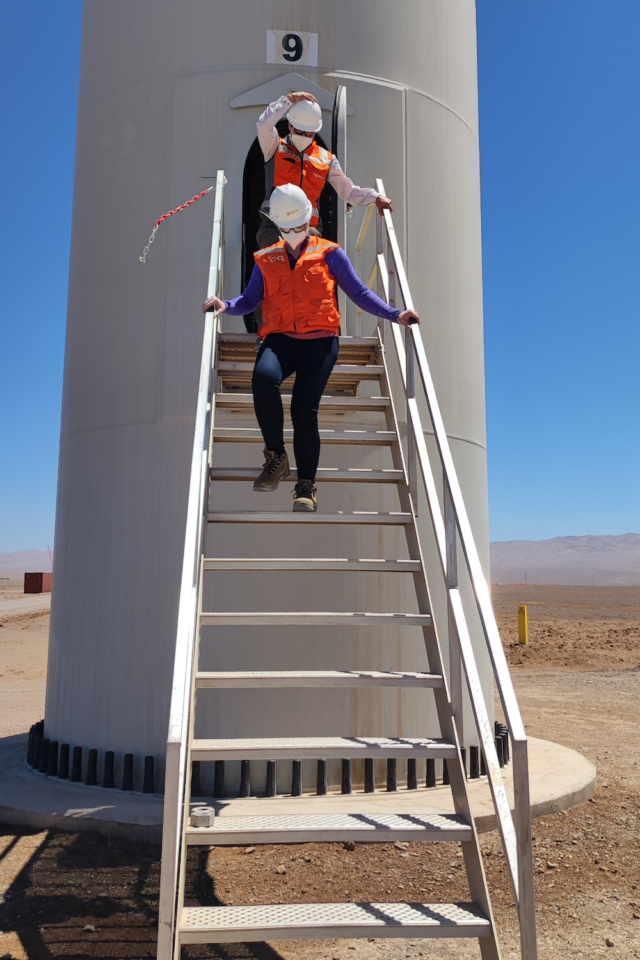
The chief executive’s tour included Cerro Tigre wind farm, part of the Cóndor portfolio that is already generating electricity, and the 160 MW Humeul wind project, Llanos del Viento
MQ: No, our investment plans have not changed in any way. All countries are facing the impact of climate risk; it will be a big challenge to really understand those climate risks and mitigate them.
MT: Climate change is a big concern for us and for the other countries where the company operates. If every year is drier than the year before, it is certainly a problem. But that means we need new ways to replace hydropower. So, we see renewables as the solution.
Added to that is the need for regulation. We need incentives for transmission to move at the same speed as renewable generation. That is one of the key challenges for the country. If we can solve it based on the natural conditions of this country, we are in a unique position in the region.
DF: Speaking of the battery project, is it profitable or economically attractive?
MQ: Yes. That’s the simple answer. We have been assessing the economics of battery storage for some time now. The expectation is that as more capital flows into battery storage deployment, the cost curve will continue to decline.
DF: What is your contracted capacity now?
MT: Regarding Andes Renovables we are at 100%. For Nazca Renovables, we already have more than a third fully contracted.
DF: How do you see 2022 for Mainstream in Chile?
MQ: We will continue to grow that portfolio very significantly. And then we would be converting it into assets under construction and in operations at an accelerated pace. Our level of ambition and now our potential to accelerate it is at an unprecedented level.
MT: If I can sum it up in one word it would be “growth”. If it’s in two, it would be “accelerated growth”. That is our goal going forward. And importantly, from Chile we are looking at Latin America. Part of our strategic plan for next year is regional growth.
PARTICIPATION IN COP26: IT WAS A TURNING POINT… THE QUESTIONS AND DISCUSSIONS WERE ABOUT HOW TO DO IT FASTER.
- [Mary Quaney] says renewable energy needs to grow extremely fast.
Times have changed and, with them, the discussion on climate change. A few years ago, says Mary Quaney, CEO of Mainstream Renewable Power, companies were pretty much rowing alone in tackling the challenges of global warming, but, she said, the recent COP26 in Glasgow became “a turning point”.
“Although this was coming before the pandemic, the crisis has been so enormously challenging that, in a strange way, it signalled to the world that we can’t continue with the status quo. It’s kind of a wake-up call,” she notes.
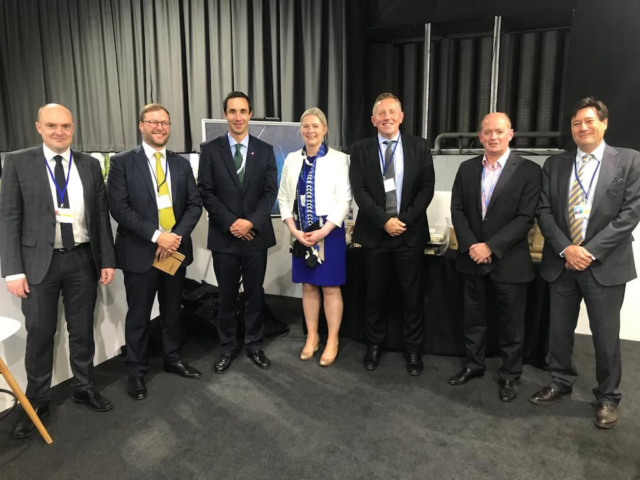
Quaney met Chilean Energy Minister Juan Carlos Jobet, third from left, during last month’s COP26 conference in Glasgow. Picture: GWEC/Ben Backwell
And she recalls that, for years, “the discussion revolved around ‘why should we care about global warming’. Today, that is accepted in the world; the thinking has changed and is well understood at the macro level. Now, the question and discussions at COP26 were about how do we do it and how do we do it faster.”
In this regard, she acknowledges that huge challenges remain, especially around the supply chain, which has been so affected with Covid-19, and in determining how much this needs to expand in capacity.
She explains that “the scale of the opportunity we have, in terms of renewable energy delivery needs to grow at an extraordinarily faster rate, starting now. The capital to deploy renewable energy and make the transition is there, but it needs to reach areas it has not traditionally reached.”
Along those lines, she says that – for example – in wind power installation they have achieved record figures in 2020 and 2021. But now, she estimates it is necessary to “quadruple that rhythm every year to reach the goals for 2030, 2040 or 2050”.
The idea is to have greater construction of transmission grids, and for this, it is necessary to allocate significant resources to the hiring and training of human capital. That is part of the experience, she explains, that their presence in Chile has given them.
“We are part of a global company, with a diversified portfolio worldwide and a reach throughout the supply chain that allows us to overcome challenges. This has allowed us to manage the construction of our projects here in Chile very well,” she says.
Related News
View all News
Media Enquiries
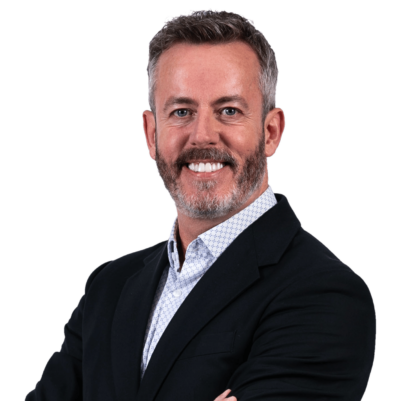
Emmet Curley
Head of Communications and Positioning
